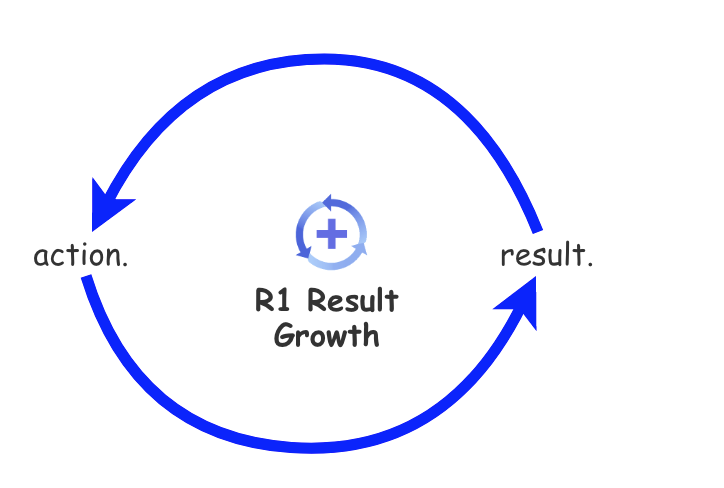System Archetype Limits to Growth
System Archetype - Limits to Growth
- Limits to Growth. A reinforcing cycle of growth grinds to a halt, and may even reverse itself, as limits are approached. The limits can be resource constraints, or external or internal responses to growth. Classic examples: Product life cycles that peak prematurely due to poor quality or service, the growth and decline of communication in a management team, and the spread of a new movement.

The Limits to Growth Archetype begins with the basic reinforcing loop where the [action] is intended to grow [result] which influences more of the same [action].

The [result] interacts with a [limiting factor] to create a [slowing action]. Typically the [limiting factor] is of a nature where it doesn’t come into play until the [result] has reached a certain amount. A bathtub doesn’t run over till the water level gets to the overflow protection, which is probably a bad example because filling a bathtub is not a growth structure.

The [limiting factor] is the goal of a balancing loop which is using the [slowing action] in an attempt to bring a balance between [result] and [limiting factor]. Remember balancing structures always have goals.

In this stock & flow version of the causal loop diagram we run into the first apparent limitation of causal loops. The causal structure doesn’t give any specifics about how the limit is effected.
The limit might be a hard limit as in the overflow level of the bathtub. It might be a soft limit where it makes progress more difficult though there still is some, or it might actually limit the action which produces the results. With stock & flow simulation models you can’t get a way with hand waving or smoke & mirrors. Everything is explicit.
Two simulations that follow will demonstrate the soft and hard limit behavior of the structure.
06/24/2017
Comments
Post a Comment